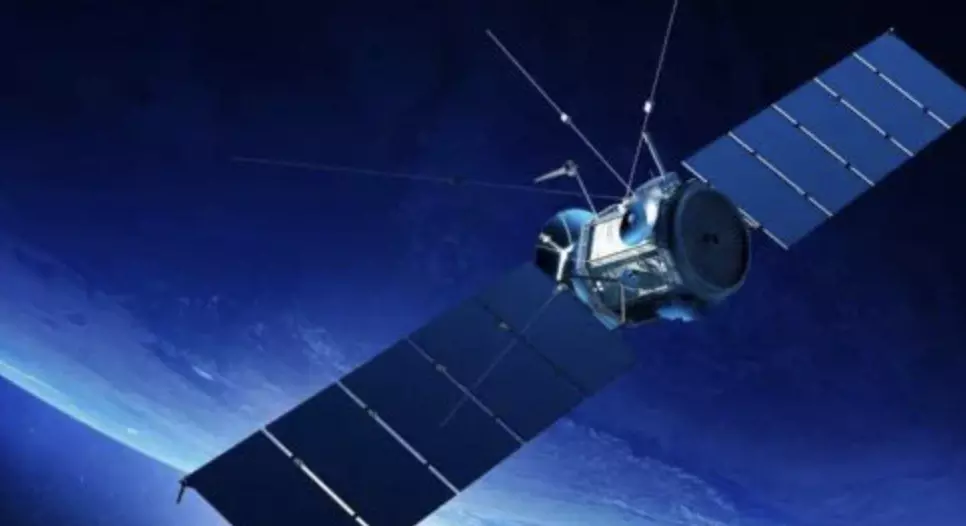Elon Musk’s Starlink satellites falling back to Earth: Is the Ozone layer at risk?
Elon Musk’s Starlink satellites falling back to Earth: Is the Ozone layer at risk?

In January 2025, approximately 120 SpaceX Starlink satellites burned up upon re-entry into Earth's atmosphere. Reports indicate that there were multiple re-entries daily, creating artificial meteor showers visible worldwide. While these light displays may appear harmless, scientists are raising concerns about their potential environmental consequences, especially regarding the ozone layer.
The issue lies in the aluminium oxide particles released when satellites like Starlink burn up during re-entry. These particles may gradually damage the ozone layer, which protects Earth from harmful ultraviolet radiation. Small Low Earth Orbit (LEO) satellites, such as Starlink, often contain a significant amount of aluminium. The satellites are designed to have a five-year lifespan, after which they are decommissioned and re-enter the atmosphere to avoid space debris accumulation.
The European Space Agency (ESA) reports that there are over 28,000 objects in space, with a significant portion in LEO. Starlink is leading this field, with nearly 8,000 satellites launched and plans to deploy an additional 42,000 in the future. As demand for global internet coverage increases, the number of satellite constellations from SpaceX, Amazon, and others continues to grow.
What Happens When Satellites Re-enter the Atmosphere?
When satellites like Starlink re-enter the atmosphere, they travel at speeds of up to 27,000 km per hour. This high velocity causes extreme friction with the dense atmosphere, generating immense heat that disintegrates the satellite. Most of the components burn up completely, preventing any debris from reaching Earth's surface. However, this burning process isn't entirely neutral from an environmental perspective.
As the satellite disintegrates, metals like aluminium undergo chemical transformations, with around 40% of the satellite's mass consisting of aluminium. Research indicates that a typical Starlink satellite weighs approximately 250 kg and produces 30 kg of aluminium oxide particles during re-entry. These particles, though tiny, remain suspended in the atmosphere for extended periods before descending to lower altitudes.
The Ozone Threat: Why Is Aluminium Oxide a Concern?
The primary worry stems from aluminium oxide particles reaching the stratosphere, where the ozone layer resides. Researchers from the University of Southern California suggest that aluminium oxide can act as a catalyst in chemical reactions involving chlorine, much like chlorofluorocarbons (CFCs), which have historically contributed to ozone depletion.
Unlike CFCs, which directly consume ozone molecules, aluminium oxide particles facilitate reactions without being consumed themselves. One particle could contribute to the destruction of thousands of ozone molecules over the course of decades. The concern is further amplified by the fact that these particles can remain in the atmosphere for years before impacting the ozone layer.
Satellites Are Designed to Fall – But There's a Catch
LEO satellites are intentionally designed to re-enter the atmosphere at the end of their operational lifespan to prevent the accumulation of space debris. This deorbiting mechanism is part of the satellites' design, which includes propulsion systems that guide them back to Earth. In the event of malfunction, the satellites will eventually fall back to Earth due to atmospheric drag.
While this strategy is considered responsible for space sustainability, the environmental consequences of the satellite re-entries have not been fully addressed.
Growing Concern Over the Increased Release of Aluminium Oxide
Recent studies highlight the rising levels of aluminium oxide in the atmosphere, coinciding with the rapid growth of satellite constellations. NASA’s high-altitude tests in February 2023 found traces of metals, including aluminium, in aerosols collected over Alaska. Researchers have also observed that the amount of aluminium oxide in the atmosphere has increased eightfold between 2016 and 2022. In 2022 alone, satellites contributed an estimated 41.7 metric tonnes of aluminium to the atmosphere—30% more than natural sources like micrometeoroids.
If the current pace of satellite launches continues, experts predict that annual aluminium oxide releases could reach 360 metric tonnes, nearly six times higher than the natural level.
The Long-Term Impact: A Slow and Steady Threat
One of the most concerning aspects is the time delay between satellite re-entry and its potential impact on the ozone layer. Modelling studies suggest that aluminium oxide particles created in the mesosphere could take 20 to 30 years to descend into the ozone layer. This means the environmental consequences of current satellite activity may not be evident for decades.
In the worst-case scenario, scientists warn that aluminium oxide could contribute to a 0.05% loss of ozone annually over Antarctica, potentially delaying or reversing the recovery of the ozone layer.
The Need for Action: Potential Solutions
Despite the growing concern, there is currently no comprehensive regulatory framework addressing the environmental impact of satellite re-entries. In the United States, the Federal Communications Commission (FCC) issues licenses for satellite constellations but does not consider the long-term effects on the ozone layer. There is also no binding international agreement to address pollution from satellite re-entries.
Experts argue that coordinated action is required to mitigate the impact. Alternatives to aluminium could be explored, and manufacturers could design satellites to be boosted into higher "graveyard" orbits instead of re-entering the atmosphere. However, this would require additional fuel and may only delay the problem.
As the number of satellites in orbit continues to rise, the world must find a balance between space exploration and environmental responsibility.

